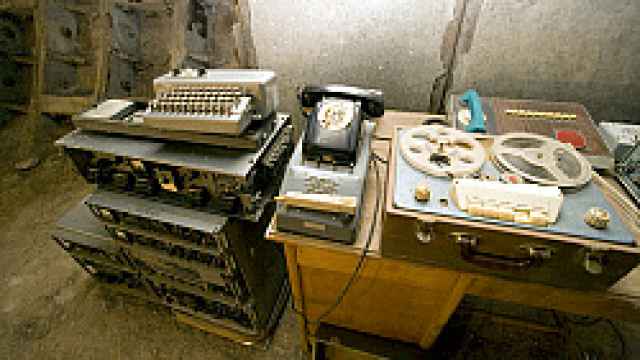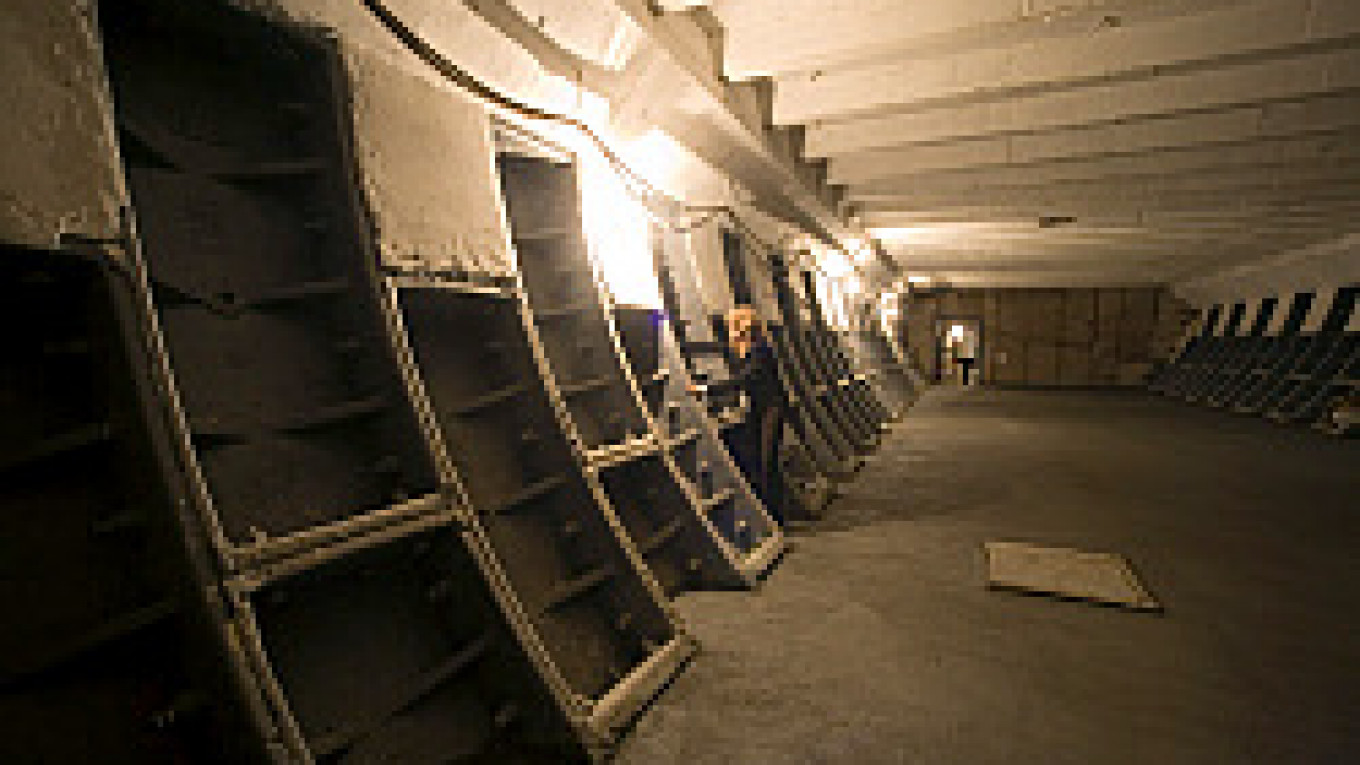Sold off in an auction last year, the bunker now belongs to a private company that plans to turn it into an entertainment complex with a museum about the Cold War, a restaurant and even a spa. But it is already possible to book excursions around the 600-meter-long network of bare, cavernous tunnels.
The bunker's director, Olga Arkharova, gave a tour of the complex Tuesday, leading the way confidently around the dusty tunnels. When a company called Novik-Serviz bought the bunker in 2006, she said, almost nothing remained of its original interior. "The tunnel used to be covered up; there are still some panels," she said, pointing at a corroded metal object. "There used to be carpets and parquet floors, and people in white coats working here."
Arkharova said the bunker was built from 1952 to 1956 as a communications headquarters for the country's leadership and military top brass. It could also be used as a bomb shelter. Up to 3,000 people could live and work there for 90 days without assistance from the outside world, thanks to stores of food and medicine, an air recycling system and diesel generators.
Still visible on the walls are terse stenciled commands such as "On the territory of the site, the walkways in the passages are narrow, be careful." A dusty portrait of Karl Marx lies on an abandoned television in a hallway. Stacked against a wall is a poster showing diagrams of rifle parts. In one tunnel, wagons used for the construction of the complex still stand on rails.
The bunker was under the aegis of the State Central Telegraph agency, although both civilians and military personnel worked there, Arkharova said. The agency began modernizing the bunker in the 1980s, but when money ran out in the '90s it was stripped bare and given only basic maintenance. "Everything more or less valuable or interesting was taken out of here, and we got the site in an horrific, neglected state. It was just a dump," the bunker director said.
 Igor Tabakov / MT Vintage communication gear like this will be displayed in the planned Cold War Museum. | |
Some secrets remain around the complex. There are a total of three entrances, Arkharova said, including one that leads to the Taganskaya metro station. She declined to show the metro entrance, but said that workers used to commute to the complex on special metro trains that ran at night.
If the new owners' plans come to fruition, the bunker will be transformed into a leisure complex with a Cold War theme. Arkharova talked about recreating the main command center -- complete with a map of the world, James Bond style -- and opening a retro cafeteria offering shots of vodka and tea from samovars.
"Here we plan to put in a recreation center," Arkharova said, standing in one of the four interconnected 150-meter tunnels. "The next tunnel will be a nightclub, a restaurant and a spa center. Those are our big plans."
The entrance to the Tagansky Protected Command Point is located at 11 5th Kotelnichesky Pereulok, underneath the camouflage netting. Metro Taganskaya. Excursions can be arranged by calling Olga Arkharova at 500-4641/2 or 8-903-746-1676. For more information, see www.info4.ru/cwm.html
.
A Message from The Moscow Times:
Dear readers,
We are facing unprecedented challenges. Russia's Prosecutor General's Office has designated The Moscow Times as an "undesirable" organization, criminalizing our work and putting our staff at risk of prosecution. This follows our earlier unjust labeling as a "foreign agent."
These actions are direct attempts to silence independent journalism in Russia. The authorities claim our work "discredits the decisions of the Russian leadership." We see things differently: we strive to provide accurate, unbiased reporting on Russia.
We, the journalists of The Moscow Times, refuse to be silenced. But to continue our work, we need your help.
Your support, no matter how small, makes a world of difference. If you can, please support us monthly starting from just $2. It's quick to set up, and every contribution makes a significant impact.
By supporting The Moscow Times, you're defending open, independent journalism in the face of repression. Thank you for standing with us.
Remind me later.


